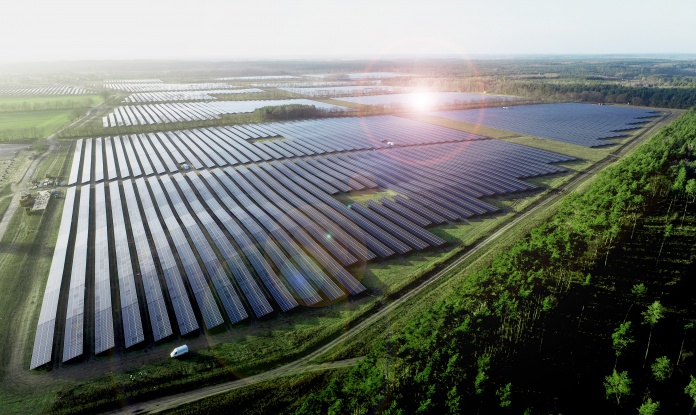Ruben Martin, Head of Engineering at BELECTRIC’s UK subsidiary, provides his insight on where the UK solar revolution stands on the path to achieving its net zero goals
The UK has set a net zero target to reduce greenhouse gas emissions by 2035. The government plans to increase solar capacity fivefold by 2035 to 70GW. To find out where the UK’s solar revolution stands on the path to achieving this goal, we should take a closer look at the project challenges the industry faces in this new era of solar. A company that knows this scenario firsthand is BELECTRIC. BELECTRIC is one of Europe’s leading EPC (Engineering, Procurement, Construction) service providers in developing, constructing, and operating solar power plants. With over 23 years of experience, the company is leading the way in solar and battery storage solutions.
The solar revolution keeps a steady pace towards the country’s decarbonisation targets. With healthy and consolidated project pipelines behind their back, numerous developers and asset owners have made relevant progress towards realising several of these projects. However, the challenges that come with incorporating renewable energy into the national electricity infrastructure should not be overlooked.
A supercharged UK solar industry
Undoubtedly, the projects we constantly see announced in the news are supercharged. Previous ages of the UK solar industry have seen most of the projects with sizes below 20 megawatts peak (MWp). According to public database information, between 2011 and 2014, 67% of the solar projects were less than 10 MWp, 25% were between 10 and 20 MWp, and the remaining were a few projects between 20 and 30 MWp. Between 2015 and 2017, there was an explosion of projects in the range below 5 MWp due to market incentives.
Current trends reveal that the charts have flipped significantly, with many projects ranging between 60 and 80 MWp. We are entering uncharted territory in the UK solar industry with very large projects in the hundreds of megawatts. These bring their own challenges – from varying terrain conditions in different fields to miles of underground cabling interconnecting the fields. Undoubtedly, the engineering efforts required for each project are increasing. We benefit here from BELECTRIC’s many years of experience with large-scale projects. From Germany to Australia – BELECTRIC has constructed many solar farms with an output of several hundred megawatts.
Levelling solar with conventional generation resources
While solar will always be an intermittent energy source, the grid requirements and demand placed upon solar energy projects by the distributed network operators and National Grid are comparable to any conventional generation assets.
Different from other technologies, with synchronous generating units and inertia behind their turbines, solar power is electronically dependent. As such, one of the more complex challenges to consider is finding the right balance between technology and grid requirements.
Customers and route to market
In the past few rounds of Contracts for Difference (CfD), several photovoltaic projects have been granted a seat in this particular route to market. Great news for the market, right? However, there is a complete misalignment between grid code compliance and the limitations set under the Low Carbon Contracts Company (LCCC) regulations. While the grid code talks about considering a mechanism to always provide reactive power to the grid, which is typically achieved by additional inverter capacity on site, the regulations for CfD demand not to exceed a certain inverter installed capacity. That problem is currently being navigated by asset owners and engineering teams, with no other option but to find a compromise between both requirements to satisfy all parties.
At the same time, the requirements from the project owners themselves have progressively increased towards more specialised design demands. That includes more integrated resilience in the system for monitoring, remote control and lists of regulations and norms to abide by.
There is much more intention to bring the solar industry up to a level comparable to more mature generation markets but with little to no standardisation achievable across projects. Going through the requirements for a project with one customer leads on many occasions to different technical solutions than the ones implemented in another equivalent project. This, in turn, implies heavier contract management resources and a more complex and lengthy engineering process.
Hybridisation for increased asset value
This new era is also bringing around a very interesting technical challenge: the integration of DC and AC-coupled energy storage systems. From a grid resilience perspective, it makes sense to connect a renewable energy resource alongside a stabilisation element. However, engineering processes need to be rediscovered and readapted so that high-quality hybrid projects can be delivered seamlessly. What would be worse than having two sections of the same project that seemed to have been designed and delivered by totally different contractors?
Homogenising the design processes, documentation packages, and integrated design outputs is very interesting for us engineers and one of the nicest challenges we have to go through now.
Evidently, the UK’s solar revolution faces many hurdles on the path to achieving its net zero target. But with more than 23 years of experience in solar power plant and energy storage system construction, BELECTRIC has learned how to prepare for the challenge.

This work is licensed under Creative Commons Attribution-NonCommercial-NoDerivatives 4.0 International.











